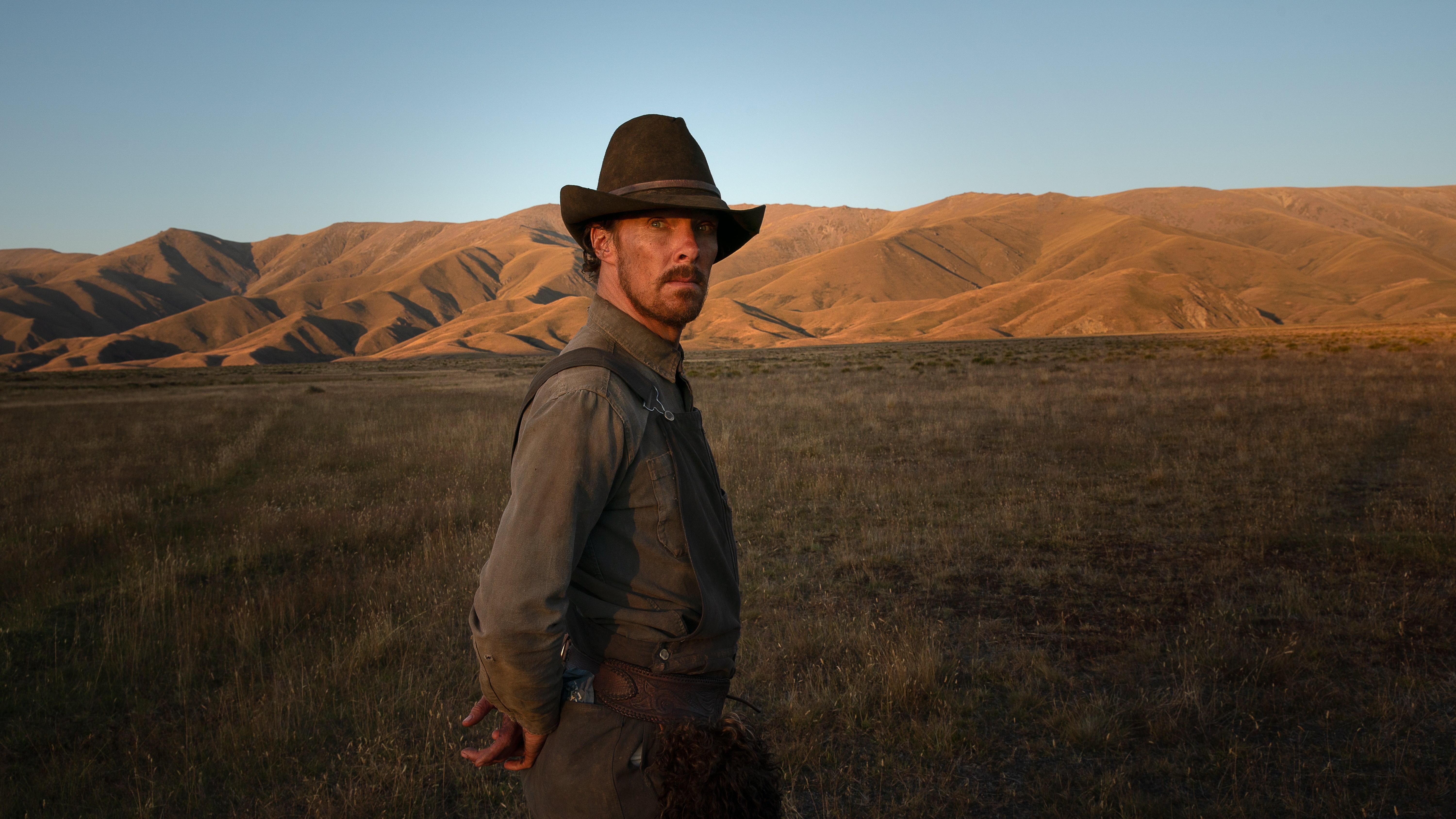Benedict Cumberbatch on buffalo chaps and stomping around The Power Of The Dog set
The charismatic actor plays the film's roughest, toughest cowboy, who also happens to be a bit of a tyrant

As Phil Burbank, the gritty co-owner of a Montana ranch in Jane Campion’s new movie The Power Of The Dog, Benedict Cumberbatch practically lurches out of the screen. He looms, stomps, snorts, and cuts an entirely imposing figure.
And it’s not by accident. As Cumberbatch told The A.V. Club when we recently talked, every single move he made on set—both on camera and off—was made in service of his character. You can watch our chat in the video, or read it in the transcript below.
The A.V. Club: I loved a lot of things about this movie, but one of the things that I loved most was that Phil really stomps around that house. He has a really ominous presence, and you can feel the weight of his existence in that space. Was that an entirely conscious decision, or is that just wood floor plus heavy boots?
Benedict Cumberbatch: No, everything’s considered from the strike of a match to the posture of a moment sitting down to how that shifts, depending on what happens in the scene. There are moments where I stealthily walk past [Kirsten Dunst’s] Rose and she doesn’t even know, and there are others where I want to make it very apparent that I’m present and it’s a psychological game I’m playing.
From the very early moments I was saying I don’t think Phil is a one step guy. I didn’t get to go into the drawing room—the room where people draw up the sets to say, “Look, I think the step should be this height because I’m that tall and my legs have that kind of reach.” I just got to the set and thought, “Yeah, I’ll take two at a time because that’s the kind of guy he is.” You feel like he just strides across the landscape.
So, yeah, it’s not by accident. Very much not. And in a film that has no gunfire, sound and the use of presence, that’s what’s weaponized. It’s banjo or a piece of rope or the way a door swings open or the way someone walks up a stair. Or is heard or not heard. Those are the weapons in this film.
AVC: Even Phil’s buffalo chaps lend him this air of bigness, just the weight and width that those give you.
BC: Yeah, absolutely. That forms my physicality for sure.
We played with that very early on when Jane [Campion] and I literally first met. She showed me the book of the sort of sensual lens and aspects of herding and ranch work and ranch men and women that she wanted to really exacerbate and concentrate on, and she showed me these chaps.
She said, “It’s like a satyr, half man and half beast. It’s so sexy,” and I thought, “Right, well, I’ll be wearing those, I suppose.” So, you know, I knew early on these would be a part of it for the winter at least.
The course, all of it informs… being on a horse for a long time, the subtle straddle legged walk or roll or just the way he stands in repose.
A lot of it’s described in the book as well, I should say. Thomas Savage’s novel is replete with the most amazing blueprint for characterization, including—although they’re very few—observations of his physicality.
AVC: Speaking of what’s in the book versus what’s on the screen, watching the movie, you get that Phil has a lot of love and respect for his mentor, Bronco Henry. But as we get into the movie, we come to realize that there might have been more there than just a teacher student relationship there.
To me, it felt a little uncomfortable knowing that their relationship had come from a sort of mentor-mentee situation, or that perhaps it was an older man-younger man scenario. How did you view Phil’s origin story in that relationship?
BC: That’s interesting. I never thought of the age difference as taking advantage or something that was predatory of Phil’s vulnerability.
I think what happened was very consensual. I mean, that was definitely my view on it. I think the torturous thing for him is not being able to fully realize what that was and not having more than maybe one experience of some intimacy with this man and not really knowing what that is, but still feeling it in his body and not being able to explore it unless he’s on his own, which is a very rare moment.
One of the many gifts of this part is that I get to carry a secret and masquerade with this protective but real masculinity in his work and the way he holds himself in the world and then explore the sensuality and connection to a past that was never fully realized and cut tragically short and unable to be expressed in an intolerant time, as it was in 1925. In private, it was just literally [Cinematographer Ari Wegner’s] camera and Jane, and just to be abandoned to what that relationship was with his past and Bronco.
So, yeah. I think it’s even confusing for the character and should remain a bit of a mystery for the audience and not be too clearly defined.
The Power Of The Dog is in select theaters now. It hits Netflix on December 1. You can check out our review right here.